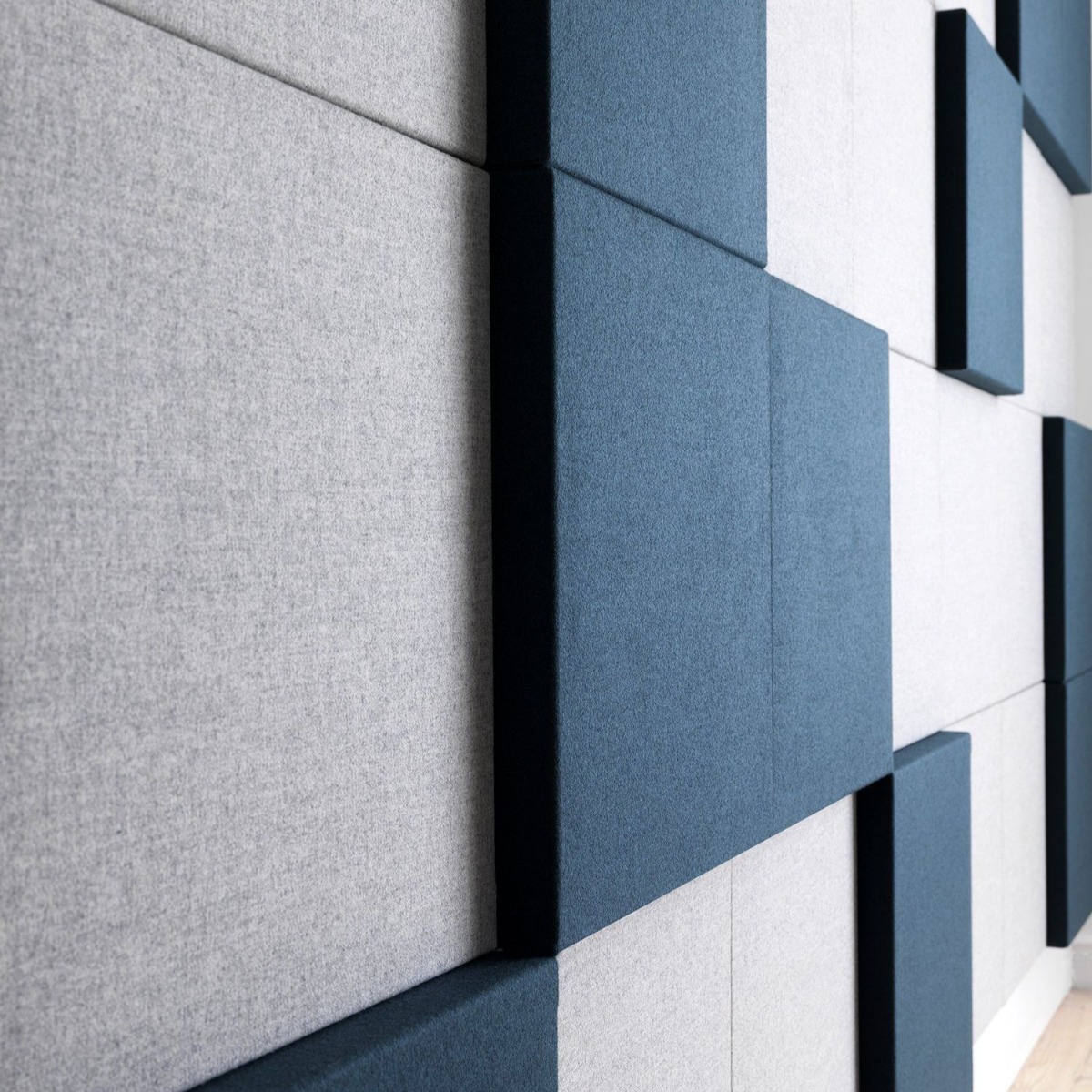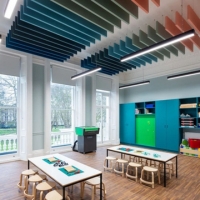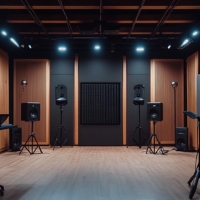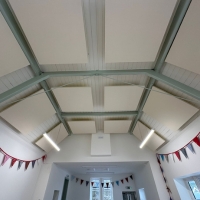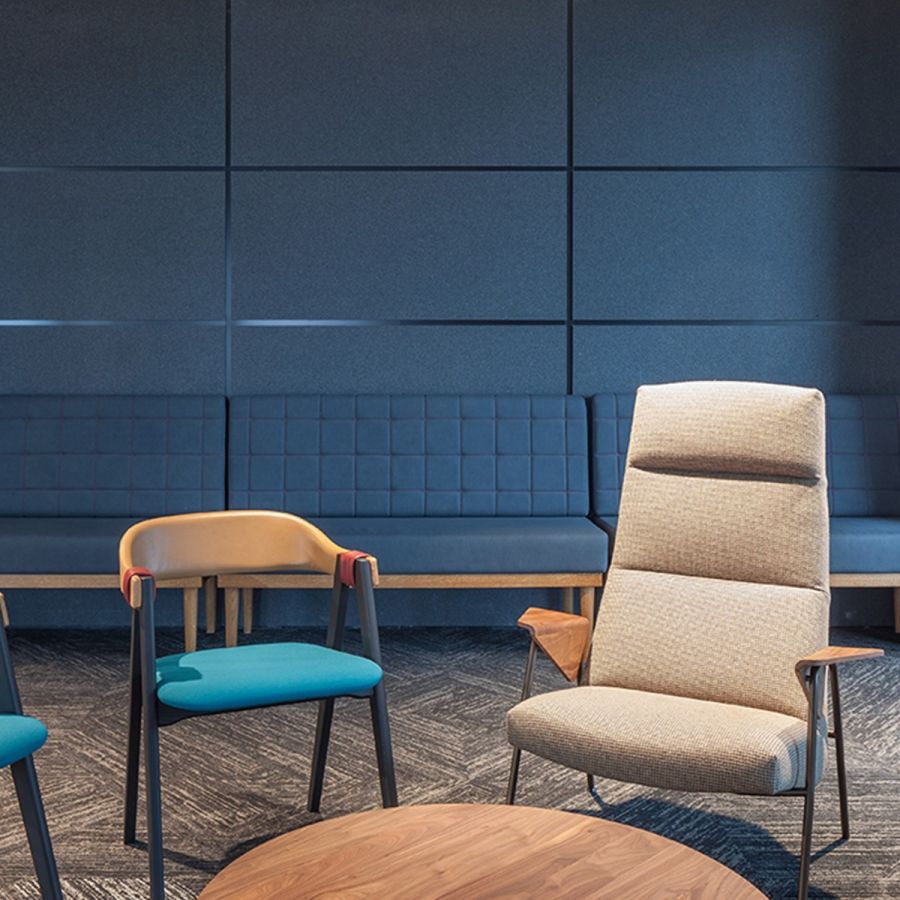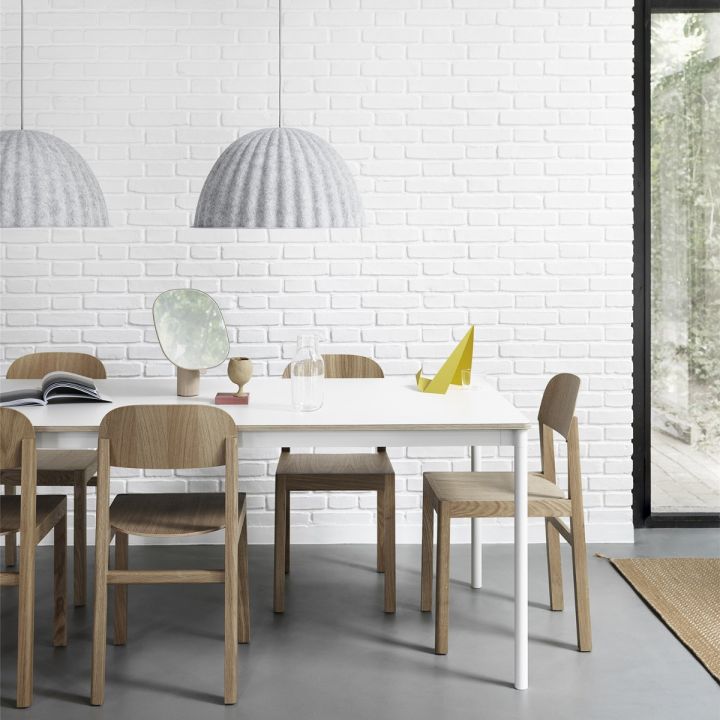
Only sustainable products
Configurable products
Installation available
Free acoustic advice
How Do Acoustic Panels Work? A Simple Guide
Acoustic panels are tools for managing sound in different spaces. They absorb sound waves, reduce echoes, and improve sound quality. Let's look at how these panels work and why they're important for creating good acoustic environments.
Key Takeways About Acoustic Panels
- Absorb 50-90% of sound energy
- Types: porous, membrane, resonance
- Thickness affects frequency absorption
- Reduce reverberation by 50-80%
- Used in studios, offices, homes, any space where reverberation causes annoyance or discomfort
- Consider room size, acoustics, looks when choosing
What Are Acoustic Panels?
Acoustic panels are materials that absorb sound energy. They come in different shapes and sizes but all help control sound reflections in a room. Acoustic wall panels are really good at treating room acoustic issues quickly and easily. These panels catch sound waves and turn them into heat energy, which reduces the amount of sound that bounces back into the room. For rooms with more reverberation, acoustic ceiling panels tend to be the go to choice.
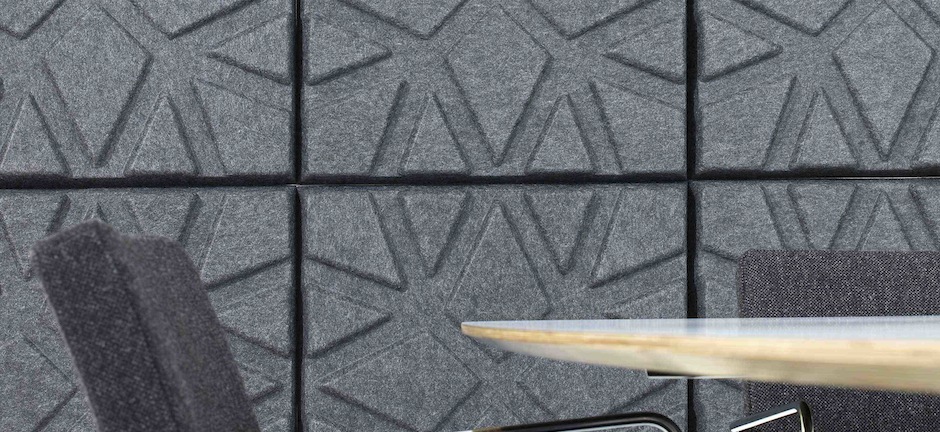
How Sound Interacts with Surfaces
When sound hits a hard surface, it bounces back, creating echoes. This can make a room sound unclear. Acoustic panels stop this by absorbing sound energy instead of reflecting it. That's why they're useful for improving home acoustics. The panels have tiny holes that trap sound waves and make them lose energy inside the material.
Types of Acoustic Panels
There are three main types of acoustic panels, each for different sound problems:
- Porous Absorbers: These are the most common, absorbing 50-90% of sound energy. Examples include the Autex Cube and Ecophon Akusto One panels. They work best for medium to high sounds and are often made from materials like fiberglass or foam.
- Membrane Absorbers: These work well for low sounds, absorbing 60-70% of bass. They have a thin cover over an air space and are good at controlling low rumbling sounds.
- Resonance Absorbers: These target specific sound ranges. They use a mix of materials and air spaces to absorb sound at particular frequencies, making them good for rooms with specific sound issues.
Materials Used in Acoustic Panels
Acoustic panels are made from different materials, each with unique properties that affect how they absorb sound:
- Fiberglass: Used in 70% of commercial panels because it's great at absorbing sound and doesn't burn easily.
- Mineral wool: Similar to fiberglass but made from recycled materials, offering good sound absorption and heat insulation.
- Foam (polyurethane or melamine): Light and easy to cut, foam panels are popular for DIY projects and small spaces.
- Recycled materials: Eco-friendly options made from recycled plastic bottles or other sustainable sources are becoming more popular.
Panel Thickness and Performance
The thickness of an acoustic panel affects which sound frequencies it absorbs best:
- 25mm panels: Good for high sounds (above 500 Hz). These thinner panels are ideal for controlling quick echoes and high-pitched reflections.
- 40-50mm panels: Effective for middle-range sounds (250-500 Hz). These are versatile panels suitable for general room treatment.
- 100mm panels: Best for low sounds (below 250 Hz). Thicker panels are necessary for controlling bass and are often used in corners or as bass traps.
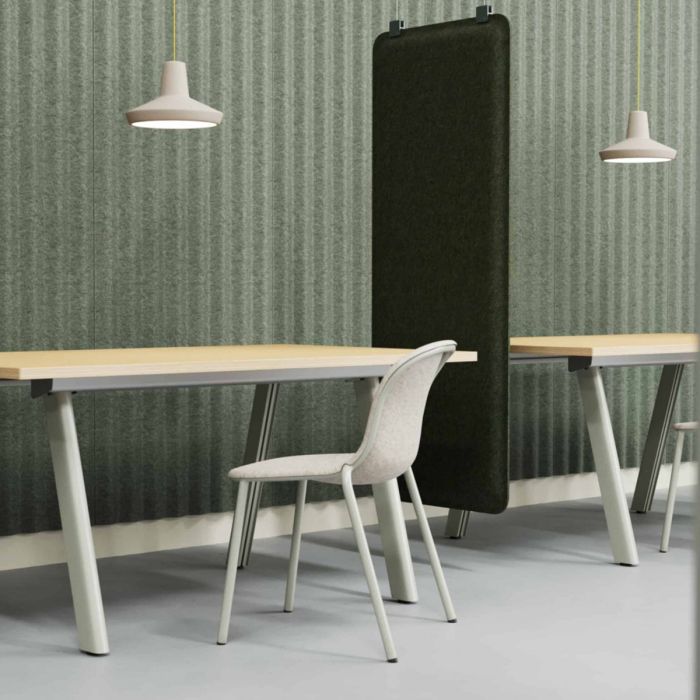
Where Are Acoustic Panels Used?
Acoustic panels improve sound quality in various spaces, each with its unique needs:
1. Music Studios
Studios use panels to absorb 50-90% of sound across all frequencies. This creates a neutral listening environment essential for accurate recording and mixing. Studios often use different panel types together to achieve a balanced sound.
2. Home Theaters
In home theaters, panels focus on middle and high frequencies, absorbing 60-80% of these sounds. This makes dialogue clearer and improves the overall movie experience by reducing unwanted echoes.
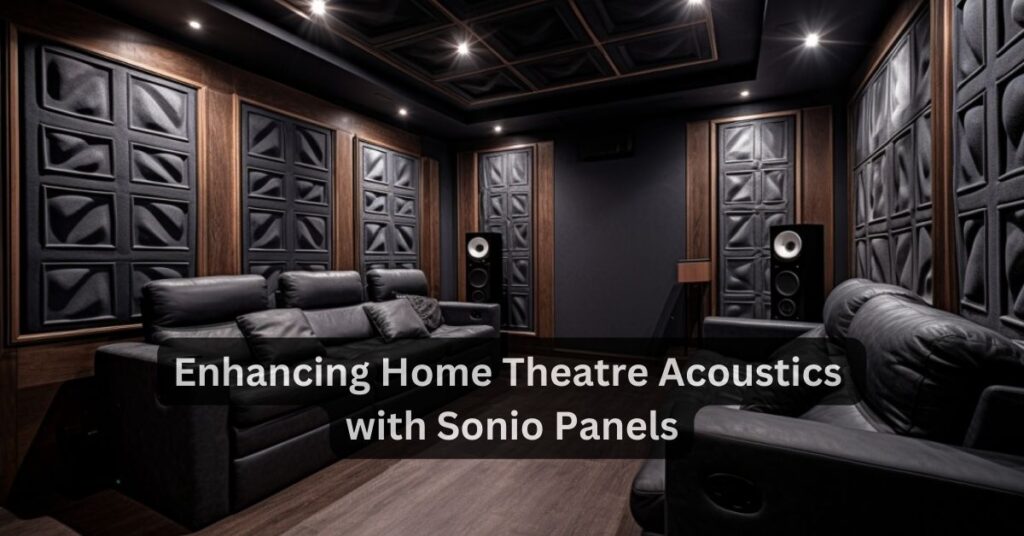
3. Office Spaces
Offices often use decorative panels that also effectively absorb 50-70% of sound. These panels help create a better work environment by reducing ambient noise levels within the space. They can be placed strategically to improve speech clarity in meeting rooms and reduce distractions in open offices.
How to Install Acoustic Panels
For acoustic panels to work well, proper installation is important. Consider these guidelines:
- Cover 20-80% of wall surface area, depending on the room's acoustic needs and how much treatment you want.
- Place panels at first reflection points, which are the spots where sound waves first bounce off walls before reaching the listener.
- Install panels in corners and on the ceiling to address bass build-up and quick echoes.
- Use adhesive, impaling clips, or z-clips for mounting, ensuring secure attachment without damaging the panels.

How Effective Are Acoustic Panels?
When installed correctly, acoustic panels can have a big impact on room acoustics:
- Reduce echo time by 50-80%, creating a clearer sound environment.
- Improve recording quality by up to 70% in studios, allowing for cleaner, more professional recordings.
- Lower noise levels in offices by 5-10 dB, which can make a noticeable difference in workplace comfort and productivity.
- Start from as little as £39.95 for cost effective acoustic panels
This makes them particularly useful for podcasters and streamers who need clear audio for their content creation. Why not check out our blog about this topic.

Choosing the Right Acoustic Panels
When selecting acoustic panels, think about these factors:
- Room size: Bigger rooms usually need more panels or thicker panels to control sound effectively.
- Existing acoustics: Check the current sound issues in your space to figure out which frequencies need the most attention.
- Your style preferences: Acoustic panels come in various colors, shapes, and designs to match your decor.
- Budget: Balance cost with performance, considering both the initial cost and long-term benefits.
- Noise Reduction Coefficient (NRC): This rating shows how well a panel absorbs sound across different frequencies.
Sonio offers a range of acoustic solutions to suit different needs.
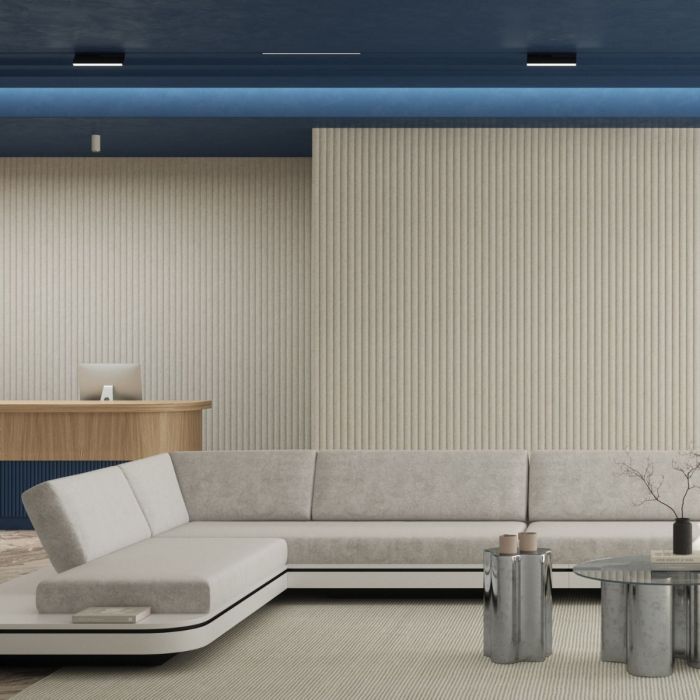
Conclusion
Acoustic panels work by absorbing sound energy, reducing echoes, and improving overall sound quality in a space. They're effective in various settings, from home studios to offices, and can significantly enhance the acoustic environment when properly selected and installed. By understanding how these panels work and considering factors such as room size, existing acoustics, and style preferences, you can make good decisions about acoustic treatment for your space.
Ready to improve your room's acoustics? Check out Sonio's range of acoustic ceiling panels to find the perfect solution for your needs. With the right acoustic panels, you can transform any space into a sonically balanced environment, whether for work, entertainment, or creative projects.[related_products is_auto_added="1"]
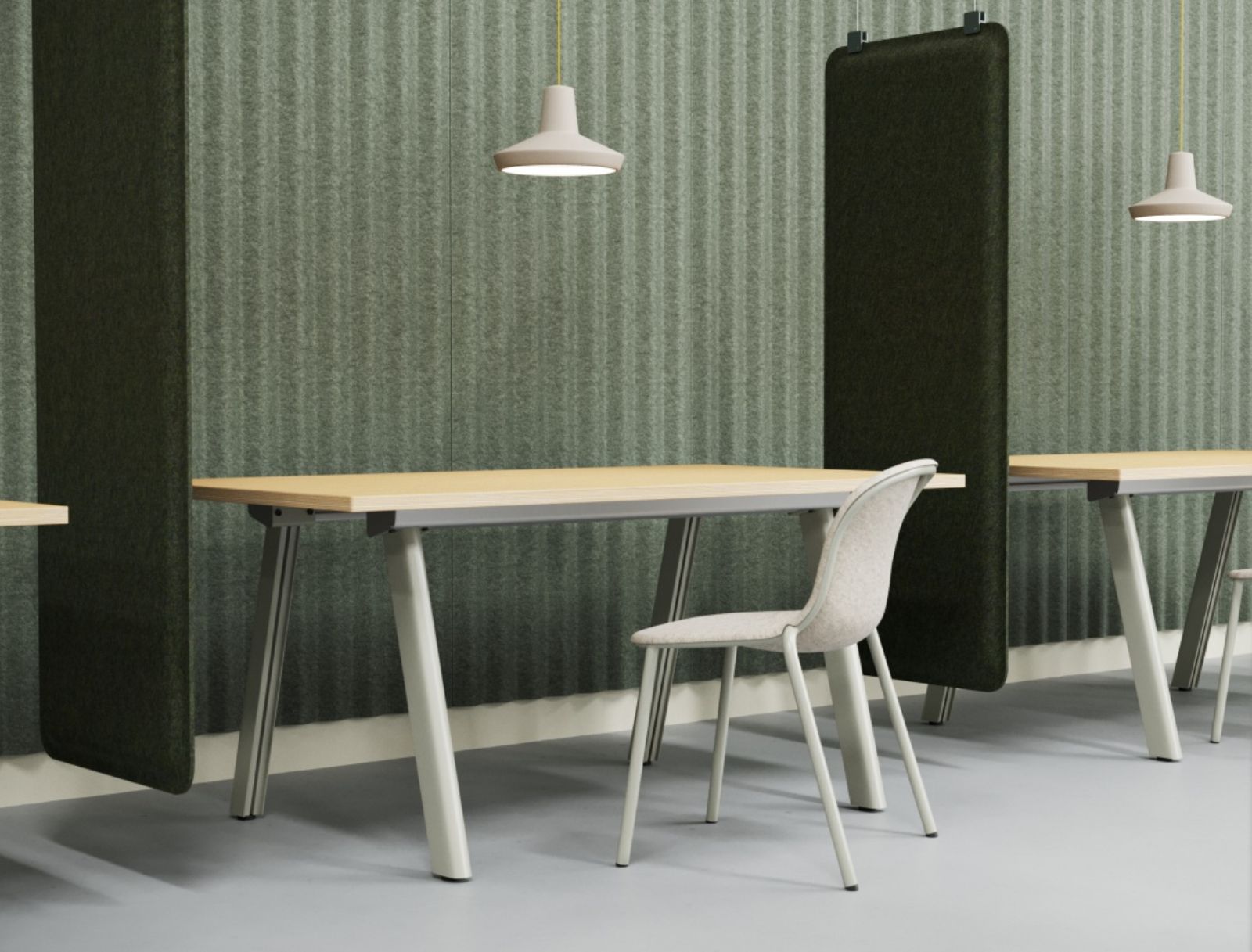 Acoustic Wall Panels
Acoustic Wall Panels 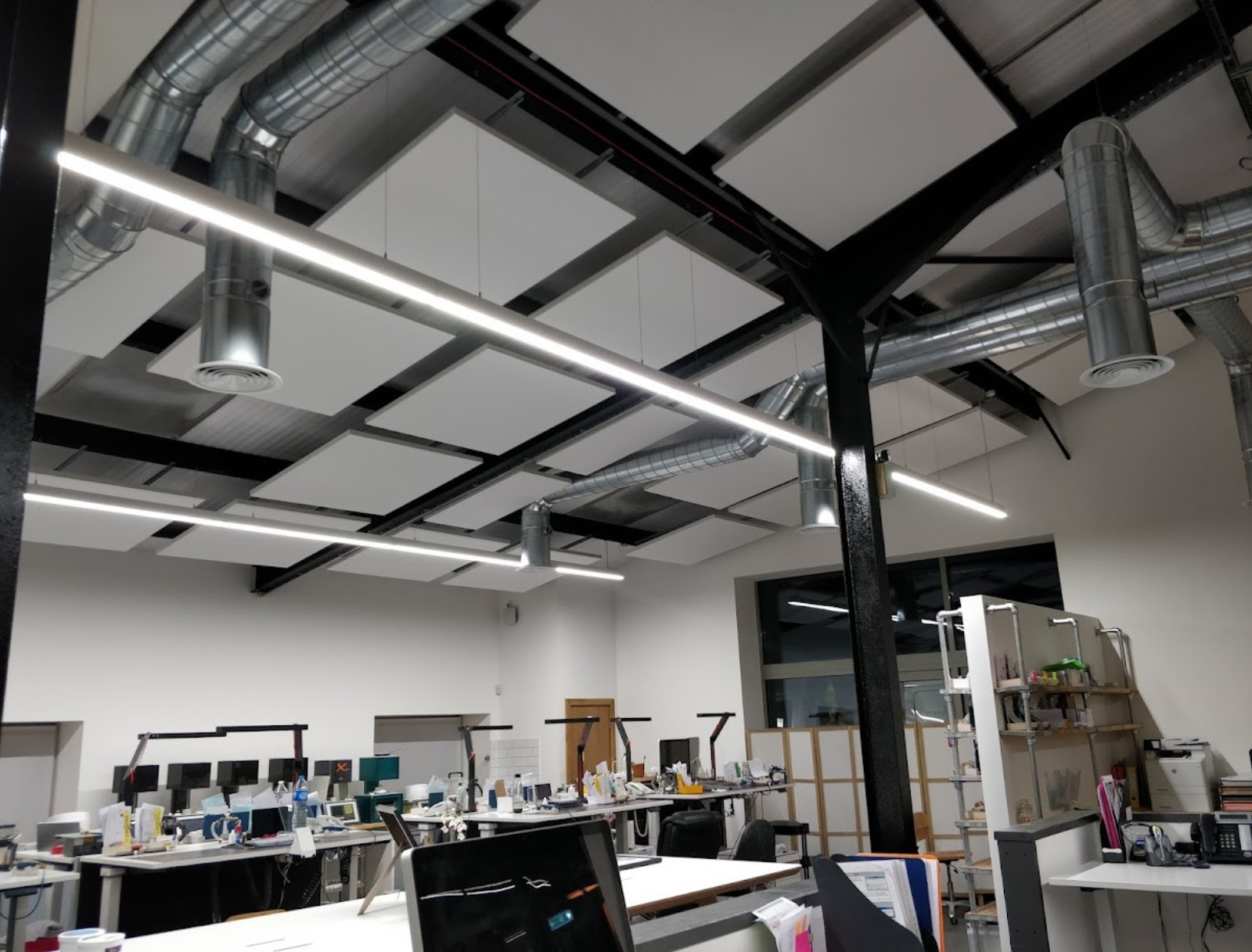 Acoustic Ceiling Panels
Acoustic Ceiling Panels 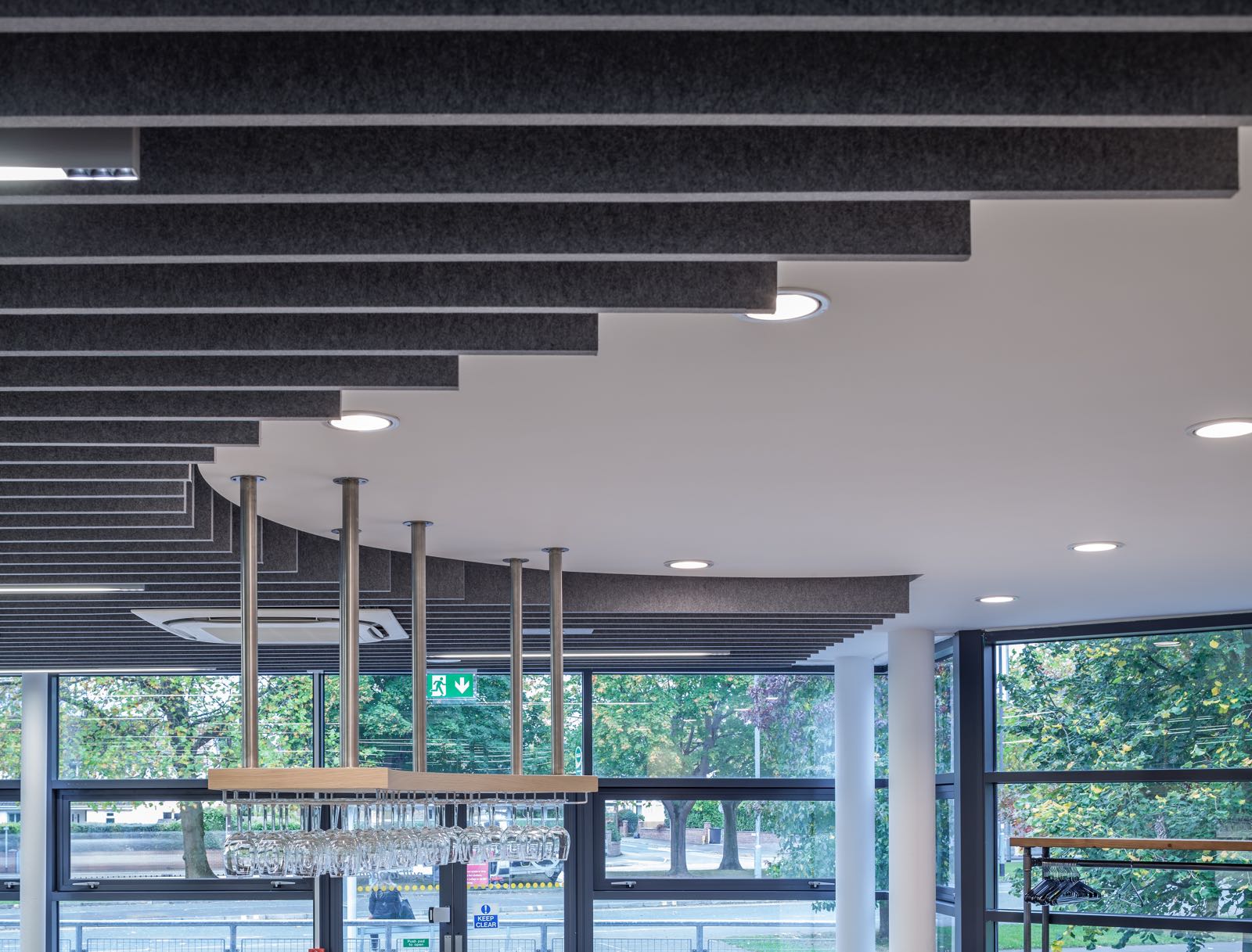 Acoustic Ceiling Baffles
Acoustic Ceiling Baffles  Acoustic Screens
Acoustic Screens  Acoustic Fabric
Acoustic Fabric 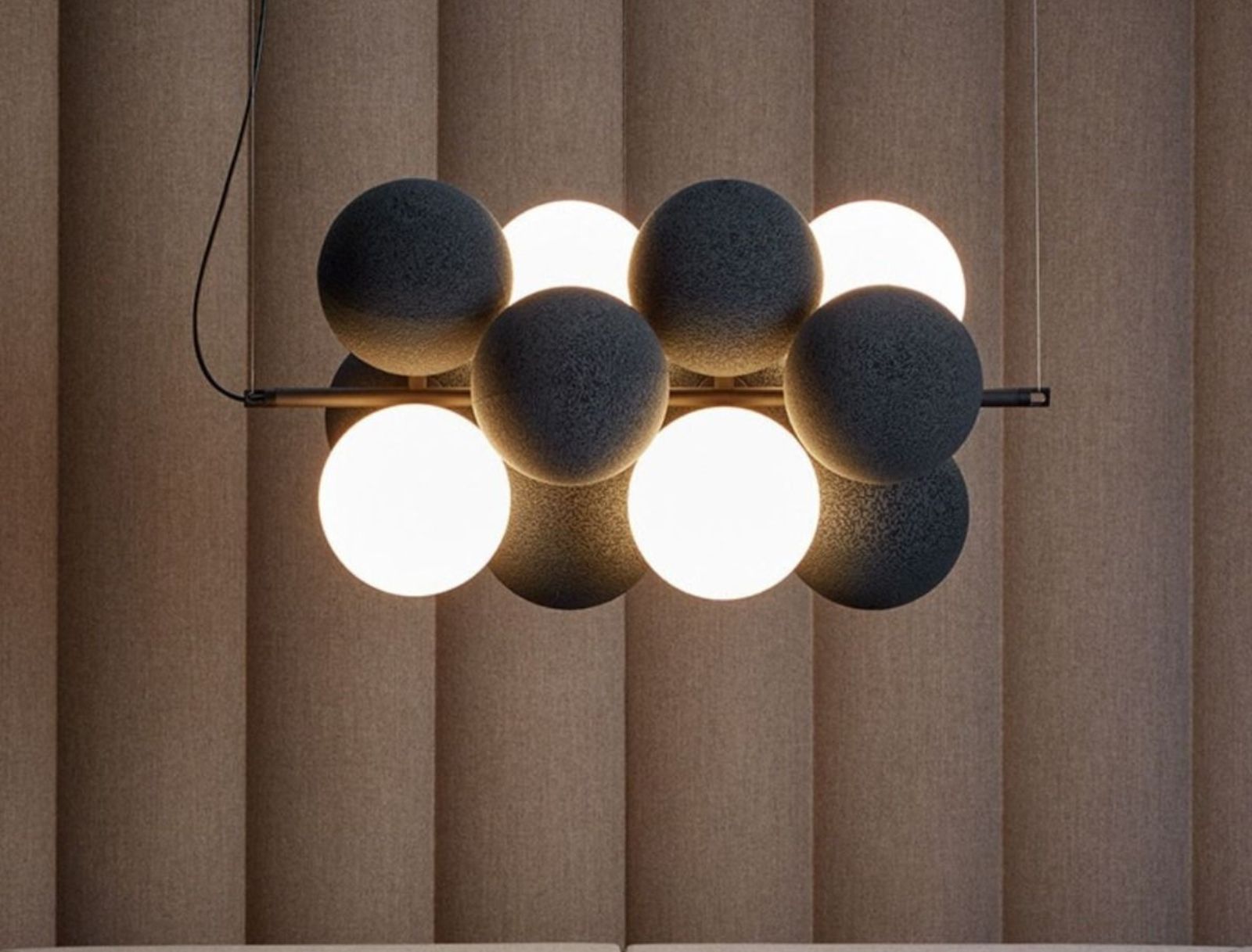 Acoustic Lighting
Acoustic Lighting 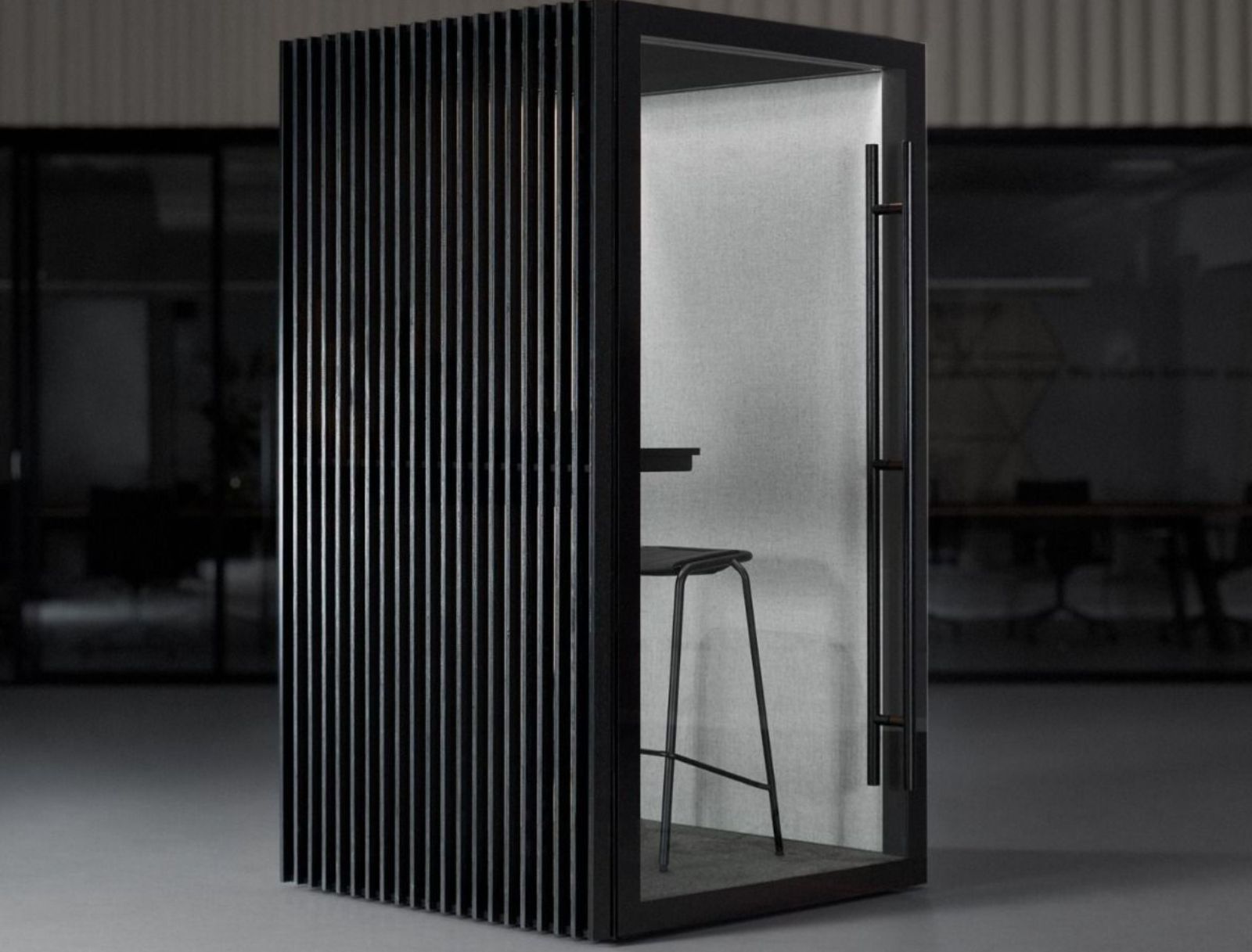 Acoustic Booths and Pods
Acoustic Booths and Pods  Acoustic Panel Accessories
Acoustic Panel Accessories 